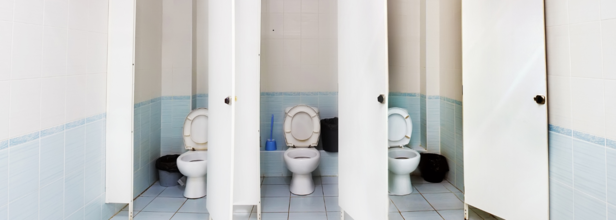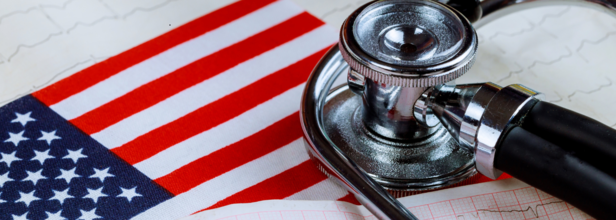- Health Conditions A-Z
- Health & Wellness
- Nutrition
- Fitness
- Health News
- Ayurveda
- Videos
- Medicine A-Z
- Parenting
- Web Stories
Love Increases Your Lifespan—But What Happens When It Turns Obsessive?

Credit: Canva
Love can make you live longer. Yes! That feeling when your crush holds your hand can actually contribute to longevity.
Dr Mark Hyman, an American physician and author, recently took to the internet to underscore that love—familial, platonic or romantic—can contribute to a longer life. Love is not just emotional, it is also biological. When you are in love or part of a supportive community, your body's repair genes can get activated and inflammation reduced. All this contributes to better health and a longer lifespan.
A Warm Hug Can Prevent Heart Attack
When you feel loved or have a strong connection with someone, your brain releases certain neurotransmitters like oxytocin, dopamine and serotonin. Now, these chemicals regulate a range of functions in your body. Oxytocin, for instance, plays a vital role in blood pressure and stress management. Also known as love hormone, it is stored and released by the Pituitary gland and helps in lowering stress. Empirical evidence indicates that oxytocin reduces the level of cortisol in saliva. This biological response is why a warm hug or holding hands can have such a calming impact. Positive social interactions can also boost the production of serotonin. It is this "happy hormone "that can significantly bolster a person's mood.
What Does Expert Say?Dr Rahul L Khemani, a Mumbai Member of doctube, confirmed the same, emphasising, "When you're in love, your brain releases neurotransmitters such as Dopamine and Serotonin and hormones such as Oxytocin. Oxytocin helps in reducing blood pressure which in turn is beneficial for the Heart. Dopamine and Serotonin are associated with happiness and the sense of calmness." "Psychologically love is an important factor in a positive well-being and gives a deeper meaning to life," he added.
Health Benefits Of Love
So by now, we have understood that being in love boosts health. Let's delve deeper into it. Studies have long indicated that those in healthy romantic relationships suffer from less physical illness. The cocktail of hormones released while in love, has a huge impact on your cardiovascular system and shields the heart from a varitey of diseases. Strong social support, with friends and family, works in the same way.
Love is also good for your mental health. Individuals with strong social connections tend to live long. Loneliness or perceived loneliness, is a leading cause of death in the world. Stress and depression, can not only trigger suicidal behaviour but also hamper normal functioning of the body. Research has shown that loneliness can increase the risk of heart disease, stroke, and high blood pressure. Therefore, it is time to listen to the one piece of advice that longevity expert Dan Buettner gave, "live in communities, fall in love, support each other if you want to live longer."
What Happens When Love Turns Into Obsession?
While love is a great thing, there are times when it turns lethal to a person's health and well-being. Obsessive love disorder (OLD) involves fixating on one person. Other symptoms include low self-esteem and extreme jealousy. While no separate medical or psychological classification exists for OLD, it can often accompany other types of mental health illnesses. For instance, people suffering from this condition do not take rejection easily and therefore, indulge in destructive behaviour.
Here's How To Identify OLD
- an overwhelming attraction to one person
- obsessive thoughts about the person
- feeling the need to “protect” the person you’re in love with
- possessive thoughts and actions
- extreme jealousy over other interpersonal interactions
- low self-esteem
What Is Shy Bowel Syndrome?

Credits: Canva
Returning to shared spaces—like schools or offices—also means returning to public restrooms. For some individuals, this transition comes with more than just minor discomfort. The anxiety around using public toilets, especially for defecation or urination, can be so intense that it interferes with daily functioning. This condition is medically recognized as parcopresis (shy bowel syndrome) and, in some cases, paruresis (shy bladder syndrome).
What Is Shy Bowel and Shy Bladder Syndrome?
Parcopresis refers to the difficulty or inability to defecate in the presence of others, especially in public restrooms. Similarly, paruresis describes the difficulty in urinating under similar circumstances. These conditions are not simply a preference for privacy—they are marked by psychological and physiological barriers that inhibit normal bodily functions.
Individuals with parcopresis often find themselves unable to initiate or complete a bowel movement unless they are in a perceived safe, private, and predictable environment, typically at home. The same applies to paruresis, where individuals may only be able to urinate in the comfort of familiar surroundings.
In public or semi-public restrooms, anxiety can trigger the sympathetic nervous system—the body’s fight-or-flight response—which disrupts the relaxation of pelvic muscles required for urination or defecation. As a result, individuals may freeze mid-process, feel pressured to rush, or avoid the restroom altogether, leading to discomfort or medical complications such as constipation or urinary retention.
The Psychological Link
Both shy bladder and shy bowel syndromes are linked to social anxiety disorder. The fear is not necessarily of the act itself but of being heard, judged, or perceived negatively by others. This can create a feedback loop: the more one worries about not being able to go, the harder it becomes.
Over time, this anxiety can escalate to significant social avoidance. People may plan their day around access to private restrooms, avoid travel, limit hydration or food intake, and even decline job opportunities or social engagements. In severe cases, this avoidance behavior can lead to agoraphobia—a fear of being in places where escape might be difficult.
Possible Contributing Factors
While psychological in nature, these syndromes may be more pronounced in individuals with pre-existing physical conditions. For instance, inflammatory bowel disease, irritable bowel syndrome, urinary tract infections, or prostate conditions can exacerbate restroom-related anxiety due to urgency or frequency, increasing the likelihood of distress in public settings.
Management and Treatment
Despite the challenges, both conditions are treatable. The first step is a medical evaluation to rule out or address any underlying physical health issues. Once physical causes are excluded or managed, psychological approaches become central to treatment.
Cognitive-behavioral therapy (CBT) is considered the gold standard. It helps individuals identify and challenge negative thought patterns and gradually exposes them to anxiety-inducing situations—a process known as exposure therapy. In this case, it may involve slowly increasing comfort with public restroom use.
Relaxation techniques, including deep breathing and mindfulness, can help regulate physiological responses to anxiety. In some cases, short-term use of anti-anxiety medications may be recommended to support behavioral therapy.
With the right interventions and support, individuals affected by shy bladder or bowel syndromes can regain confidence and return to normal daily functioning—including using public restrooms without distress.
The 'Big Beautiful Bill' Now Awaits Trump's Sign To Become A Law As Deadline July 4 Is Here; What It Means For Healthcare

Credits: Canva
In a controversial move with far-reaching health consequences, the U.S. House passed the Trump administration’s sweeping domestic agenda legislation—dubbed the “Big Beautiful Bill”—just before the July 4 deadline set by the president.
While its proponents claim it will make the country “stronger, safer and more prosperous,” leading health experts warn the bill is a dangerous and unethical setback for public health in the U.S.
With major cuts to Medicaid, significant changes to the Affordable Care Act (ACA), and reduced access to basic nutrition and reproductive services, the legislation’s health implications are vast and immediate.
What’s at Stake
At the heart of the bill is a $930 billion cut to Medicaid funding over the next decade—the deepest reduction to the program in its history.
In addition, for the first time, work requirements will be imposed on certain able-bodied adults aged 19 to 64 to retain their Medicaid benefits. Parents of children aged 14 and older must also meet this 80-hours-per-month rule through employment, training, volunteering, or school.
Dr. Jason M. Goldman, president of the American College of Physicians (ACP), as reported in healio.com, called the cuts “devastating” and warned they would cripple the U.S. health care system and worsen public health outcomes.
Similar concerns were echoed by the American Medical Association (AMA), the American College of Obstetricians and Gynecologists, and the Emergency Nurses Association, all of whom opposed the bill.
Dr. Arthur L. Caplan, founding head of the Division of Medical Ethics at NYU Grossman School of Medicine, called the bill “immoral, unethical, and tragic,” also reported in healio.com.
“Slashing Medicaid and imposing work requirements is punishing our poorest, most vulnerable, and mentally ill populations,” Dr. Caplan said.
“It’s unconscionable that the solution to economic reform is to cut basic health care.”
No Access To Affordable Care Act
The bill also weakens the Affordable Care Act (ACA), which could lower enrollment rates and disrupt access to care. One of the major changes is the elimination of automatic re-enrollment in ACA plans. Policyholders must now update their information annually, and the open enrollment window has been shortened by a month.
For individuals applying outside the open enrollment period—due to life events like job loss or family additions—advance premium subsidies will no longer be available immediately. Under current rules, applicants get up to 90 days of help while their paperwork is processed. The new law forces applicants to wait for full documentation approval before receiving assistance.
According to the Congressional Budget Office (CBO), the result will be catastrophic: an estimated 11.8 million more uninsured Americans by 2034.
“These patients don’t disappear,” Dr. Caplan said. “They flood emergency rooms with preventable issues—headaches, infections, chest pain—overburdening a system already stretched thin.”
Emergency Rooms on the Brink
With millions projected to lose insurance, ERs may become the default safety net—a role they are not equipped to handle.
“Hospitals will close. Services will shrink. Waiting times will skyrocket,” Dr. Caplan warned. “And it won’t just affect the poor—it will affect everyone.”
He also criticized the bill for ignoring the root cause of health care costs in the U.S.
“We have the most expensive, inefficient system in the world. Yet instead of tackling pricing, this bill cuts access,” he said.
SNAP Benefits, Nutrition & Health Impact
The bill also drastically alters the Supplemental Nutrition Assistance Program (SNAP), affecting roughly 42 million Americans. The age for work requirements has been raised from 54 to 64, and overall benefits will be reduced.
Many families will now receive less support—$292 for an individual and $975 for a family of four.
Nutrition is a cornerstone of preventive health, and public health experts say this rollback will contribute to higher rates of malnutrition, particularly among older adults and low-income families.
Reproductive Health and Planned Parenthood Defunded
In another blow to health access, the bill defunds Planned Parenthood, making it ineligible to serve Medicaid patients. According to the Contraceptive Access Initiative, 10% of Medicaid-covered women who received family planning services in 2021 did so through Planned Parenthood.
The move will severely limit access to contraception, STD testing, cancer screenings, and reproductive counseling, particularly in underserved areas.
Physician Payments, Rural Hospitals, and more
To soften the backlash, the bill includes a 2.5% temporary increase to Medicare Physician Fee Schedule rates in 2026, and reinstates certain telehealth flexibilities, as noted by the American Telemedicine Association.
However, experts like Dr. Caplan argue that these are inadequate responses to a much deeper crisis.
“That’s like saying the ship is sinking, but we’ve added two lifeboats,” he said. “Increased reimbursement won’t matter if your patient population loses coverage.”
Study Finds Women Who Work Night Shifts Have A Greater Risk Of Asthma

Credits: Canva
A new UK-based study published in ERJ Open Research, has found that women who work permanent night shifts face a significantly higher risk of developing moderate to severe asthma compared to those who work during the day.
The findings add to the growing body of evidence that shift work, particularly night shifts, can have adverse effects on health—this time, with a gender-specific warning.
How Was The Study Conducted?
The study, conducted by researchers using data from over 280,000 participants in the UK Biobank, observed that 5.3% of the cohort had asthma, and 1.9% had moderate to severe asthma. Among these, female night shift workers stood out: those who worked permanent night shifts were found to have 50% higher odds of developing moderate-severe asthma than female day workers.
Interestingly, this association was not observed among male shift workers.
Circadian Disruption and Lung Health
Dr. Sunil Kumar K, Lead Consultant - Interventional Pulmonology at Aster CMI Hospital, Bangalore, explained how circadian rhythm disruption could increase respiratory risk.
“When our body’s natural rhythm is thrown off by night shifts or irregular sleep, it impacts not just our sleep cycles but also lung function,” he explained.
“The lungs don’t get the recovery time they need. Over time, this can impair breathing, reduce oxygen levels, weaken immunity, and elevate the risk of serious respiratory issues—especially in those already predisposed to asthma or COPD.”
The Hormonal Link
The researchers also suggested that hormone levels—specifically testosterone and sex hormone-binding globulin (SHBG)—may play a protective role against asthma. Women, especially post-puberty, tend to have lower levels of these hormones, possibly explaining their greater vulnerability.
Dr. Sunil noted that recent studies have reinforced the protective role of testosterone in reducing airway inflammation, which is a key concern in asthma management. “This could explain why asthma tends to be more severe in women after puberty,” he said. While hormone testing is not standard in asthma diagnosis yet, he believes that advancing research may soon shift clinical protocols.
Gender-Specific Vulnerability
The study further found that women who had undergone hysterectomies—with or without oophorectomies—also faced a higher risk of moderate to severe asthma, suggesting that hormonal changes could further exacerbate vulnerability.
“Female biology is more sensitive to circadian disruption,” Dr. Sunil pointed out. “Estrogen may worsen airway inflammation when sleep cycles are disturbed, while testosterone seems to offer some protection—something men naturally benefit from.”
He added that these findings should encourage workplaces to consider flexible schedules or regular lung health screenings for female night shift workers.
Underdiagnosed, Underdiscussed
Women working night shifts also reported more frequent symptoms such as wheezing or chest whistling and had greater odds of obstructed lung function compared to their male counterparts.
“In practice, we often see female patients with wheezing and breathlessness, but the link to lifestyle factors like night shifts is rarely discussed,” Dr. Sunil said. “These patterns are crucial for early diagnosis and management but remain under-addressed.”
Could HRT Be a Solution?
Given the hormone connection, researchers suggested that hormone replacement therapy (HRT) might be explored as a preventive measure for postmenopausal women doing night shifts.
“HRT could help balance hormone levels, protect lung function, and reduce inflammation,” Dr. Sunil said. “But it must be approached cautiously, given known risks like blood clots or heart disease. Tailored care strategies and careful risk assessment are key.”
© 2024 Bennett, Coleman & Company Limited

